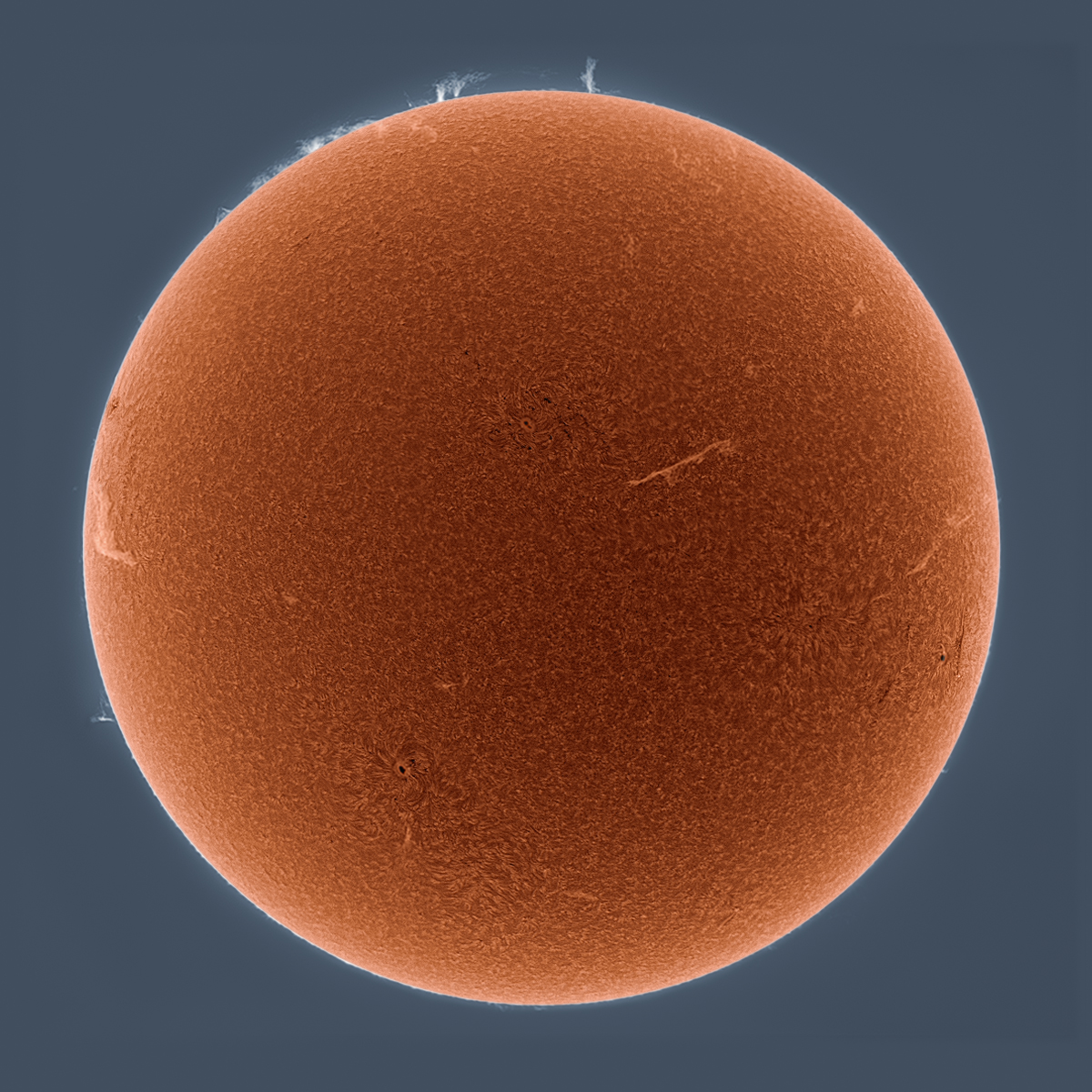- The majority of the plotting issues we discussed have actually been addressed in the new IDL 8.0.
- AstroBetter, a site with the purpose of providing "tips and tricks for professional astronomers", has a good honest assessment of the pros and cons of IDL versus Python. (A list that is continuously updated.)
That said, I will point out a few things (being the biased person I am):
- There are real reasons why the Hubble, James Webb space telescope and ALMA teams as well as STScI are migrating a lot of their code base to Python .
- For that matter, this is why CERN is providing python wrappers for their major pieces of software like ROOT.
- I agree with these decisions. :)
Just some observations. That said, enjoy a beautiful picture of the sun taken by Alan Friedman:

Hi,
ReplyDeleteyou said "There are real reasons why the Hubble, James Webb space telescope and ALMA teams as well as STScI are migrating a lot of their code base to Python." Can you elaborate?
Axel.
Hi Axel,
ReplyDelete1. I really don't want to be political about this as I use IDL every other day it seems to do research and really don't have some secret agenda against the language.
2. That said, I will refer you to the pros and cons link as that elaborates the reasons most accurately.
3. However, if you really are interesting in my personal spin: Python is a more modern, feature-full and easy to use language that is used by orders of magnitudes more programmers and is free and installed by default on nearly every linux/unix type computer. IDL is a more ancient and archaic language without many modern features, used by practically no-one in comparison and its users are charged a lot of money to use it.
4. That said, if, like many astronomers, you find that all the codes you need to use are in IDL then you are sort of stuck. I personally believe many of these large collaborations want to free future generations of astronomers from this predicament.
Might I suggest you try Ruby? Same power of Python with a much more elegant syntax.
ReplyDelete